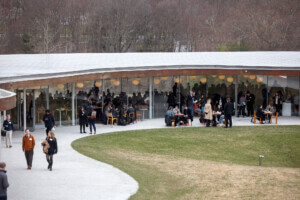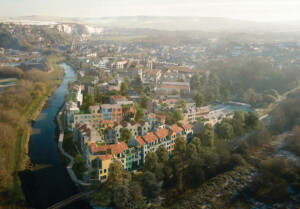Looking to build sustainably but don’t know where to start? Want to specify carbon-neutral components but afraid they’ll get value-engineered out of the project? According to a new report from the AIA, these are some of the largest hurdles architects face in trying to integrate sustainable materials in any given project.
In the newly released Sustainability in the Architect’s Journey to Specification report, available for free on the AIA’s website, the institute surveyed architects on what they saw as the biggest obstacles to building sustainably in real-world conditions. The report is the fourth in the AIA’s series of “Architect’s Journey to Specification” studies; the first, in 2016, sought to understand AIA members’ general attitudes towards specifying sustainable materials; the second, in 2018, examined the gap between architects and suppliers, and the third, in 2019, again asked members about their attitudes towards sustainable building and benchmarked the change from 2016.
It seems that some of the biggest challenges to actually using materials architects consider sustainable lies not with desire to do so (79 percent of architects said they wanted to specify more sustainable materials), but in the cost—and convincing the clients of the merits. A whopping 81 percent of respondents said that when specifying a product, the performance was their top concern, while only 37 percent said that end-of-life disposal (or reuse) was something they considered. Thus, manufacturers and architects looking to pitch sustainable products to their clients could shift more towards real-world performance benefits.
On the manufacturers’ side, 59 percent of architects said that cost is what holds them back from specifying more sustainable products and that they didn’t fit within often tight budgets. However, 46 percent reported that their clients are concerned about sustainability and that 32 percent were committed to using sustainable materials. Still, 70 percent of clients were reportedly “too focused on costs” to consider using more sustainable products over conventional alternatives.
Another major issue is the perceived lack of buy-in architects feel in pitching such alternatives; 59 percent of architects said that they lacked team support in doing so, and a whopping 80 percent of millennial architects said they wanted to specify more sustainable options but felt unable to do so.
Even as sustainable alternatives become cheaper and more easily available, it seems a lack of buy-in from contractors and clients, and a generally conservative, “wait-and-see” approach from architects toward new products is slowing their adoption. To read the full range of insights, including how often product certification is factored into specification decisions, you can request the full Sustainability in the Architect’s Journey to Specification from the AIA.











